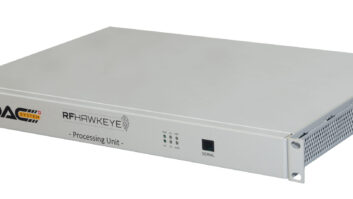
Anti-UAV Defense System, or AUDS
Federal air-space regulators are checking out drone death rays. The Federal Aviation Administration is testing antidrone systems for its Pathfinder Program, created to detect and identify drones flying too close to airports. The agency recently signed cooperative research and development agreements for antidrone systems with Gryphon Sensors LLS of Syracuse, N.Y., Sensofusion of New York (and Finland) and Liteye Systems Inc. of Centennial, Colo., representing three British firms.
“The explosive growth of the unmanned aircraft industry makes evaluating detection technologies an urgent priority,” said Marke “Hoot” Gibson, FAA senior advisor on UAS Integration in February, when the FAA teamed up with the Department of Homeland Security and CACI International to test that company’s antidrone prototype system.
The availability of small unmanned aerial vehicles has exploded in the last two years, leading the FAA to create a drone registry in December. By March, there were more than 400,000 entries listed in the registry. With the increased availability of drones, reported sightings near airports and aircraft also rose to a rate of around 100 a month, according to the FAA.
Via Liteye, the British firms have proffered the Anti-UAV Defense System, or AUDS, said to “to detect, track, classify, disrupt and neutralize” unmanned aerial vehicles as far as six miles away. AUDs was developed by Blighter Surveillance Systems, Chess Dynamics and Enterprise Control Systems. The FAA tapped AUDS for its Pathfinder Program, developed to ID rogue drones flying too close to airports.
AUDS uses a Ku Band electronic scanning radar to detect a drone, then tracks it using precision infrared and daylight cameras and “specialist video tracking software,” before disrupting the flight with a directional radio frequency jammer. The entire process is said to typically take between eight and 15 seconds. The AUDS team said it has “now carried out over 400 hours of live testing in government-related trials against more than 400 flown sorties of Group 1 UAVs.” Group 1 unmanned aerial vehicles are those weighing 20 pounds or less and with an operating altitude of 1,200 feet or less. It also was said to be found effective with micro UAVs — 4.4 pounds or less, according to the FAA classification — at up to 1.2 miles.The AUDS system can be operated from fixed locations or mobile platforms, according to its developers.
Also see…
March 31, 2016
“FAA Opens Drone Registry to Commercial Users”
As of March 31, the web-based registry will be open to owners of small unmanned aircraft systems used for commercial, public and other nonmodel aircraft operations. Up until now, commercial drone users had to register had to use the FAA’s legacy registration system in Oklahoma City, Okla.
March 28, 2016
“Drone Sightings: FAA Logs 583 Reports of UAVs Near Airports”
The FAA said reports of unmanned aircraft have increased dramatically since 2014, and now stand at around 100 a month.
February 8, 2016
“Drone Rules Wend Through Congress”
Lawmakers are pressuring the FAA to get on with it so that UAS research and development isn’t driven offshore.












